Powerful conservation tech tools are gathering more data in the field than ever before. But without equally powerful and effective data management and processing tools, that data - no matter how groundbreaking or interesting - will not be able to reach its full potential for impact.
Data management can sometimes seem intimidating to conservationists, especially those just getting started in the world of conservation tech or experimenting with new data collection methods. While every community member's workflow and preferred data management and processing methods may be different, this group can serve as a resource to explore what works for others, share your own advice, and develop new strategies together.
Below are a few WILDLABS events dealing with datasets collected from various conservation tech tools:
Nicole Flores: How do I get started with Wildlife Insights?
Jamie Macaulay: How do I analyse large acoustic datasets using PAMGuard?
Sarah Davidson: Tools for Bio-logging Data in Conservation
Whatever conservation tech tools you work with, and whatever your preferred data management methods, we hope you'll find something helpful and effective in this group when you become a member!
No showcases have been added to this group yet.
- @KC
- | she/her
- 0 Resources
- 0 Discussions
- 8 Groups
- @AnthonyMinazi
- | Mercy

- 0 Resources
- 0 Discussions
- 1 Groups
- @anoibi
- | He
I am a conservation biologist who is using modern technology to understand the ecology of wildlife. Such technologies include bioacoustics, Gis and movement ecology tools. I am very hopeful that these courses will greatly impart on my skill set, and I am committed to learning.
- 0 Resources
- 0 Discussions
- 4 Groups
- @Arjun_Viswa
- | S
- 0 Resources
- 0 Discussions
- 26 Groups
- @bcknr
- | He/Him
- 0 Resources
- 0 Discussions
- 6 Groups
Pl@ntNet
Backend and DB engineer for Pl@ntNet at Cirad, Montpellier, France

- 0 Resources
- 1 Discussions
- 4 Groups
- @PierreBonnet
- | Pierre
https://orcid.org/0000-0002-2828-4389

- 0 Resources
- 1 Discussions
- 6 Groups
- 0 Resources
- 0 Discussions
- 18 Groups
Field-based ecological engineer and naturalist with a special interest in data science and a strong passion for innovation in biodiversity monitoring.
- 0 Resources
- 2 Discussions
- 6 Groups
- @frides238
- | She/her
Hi! I am Frida Ruiz, with a bachelor's in Mechanical Engineering and very interested in habitat restoration & conservation. I am excited to connect with others and learn about technology applications within applied ecology & potential research opportunities

- 0 Resources
- 5 Discussions
- 13 Groups
- @eliseb227
- | she/her
Yale University
Biodiversity Data Coordinator @ Yale Center for Biodiversity and Global Change
- 0 Resources
- 0 Discussions
- 8 Groups
Open Source for Nature | Conservation focused Technologist

- 0 Resources
- 8 Discussions
- 7 Groups
Operating the largest tropical forest camera trap network globally, TEAM Network has accumulated over 2.6 million images. How can large datasets coupled with new techniques for data management and analysis provide...
28 April 2016
From artificial “sniffer” technologies to portable DNA sequencers, the Wildlife Crime Tech Challenge received hundreds of innovative ideas to help stamp out wildlife crime. Now, the Challenge is proud to announce 16...
22 January 2016
Dr. Lucas Joppa, Scientist at Microsoft Research, considers the evolving impact of data in conservation and society. He examines the difference between ‘big data’ and ‘small data’, and explores how models such as the...
22 December 2015
John Amos, President of SkyTruth, explores how remote sensing is being used in conservation today and the importance of sky-truthing. He examines the role that citizen scientists can play in increasing transparency in...
21 December 2015
The speed at which data travels from the point of collection to a format which is understandable and useful for decision makers can be of critical importance. In this case study, Tim Wilkinson discusses a powerful suite...
6 November 2015
August 2025
October 2025
event
event
November 2025
event
March 2025
event
February 2025
event
87 Products
Recently updated products
| Description | Activity | Replies | Groups | Updated |
|---|---|---|---|---|
| Retweet on OpenSoundscape - great package and documentation that allows you to build your own CNNs! Note that this is in Python though. There are tons of bioacoustics... |
|
Acoustics, Data management and processing tools | 1 year ago | |
| @cmwainaina please take a look |
|
Animal Movement, AI for Conservation, Camera Traps, Connectivity, Data management and processing tools, East Africa Community, Emerging Tech, Ethics of Conservation Tech, Human-Wildlife Coexistence, Marine Conservation, Protected Area Management Tools, Geospatial, Sensors, Software Development | 1 year ago | |
| Hi @nyangetamagesa , i'm so grateful for our input. |
|
Human-Wildlife Coexistence, Data management and processing tools, East Africa Community, Women in Conservation Tech Programme (WiCT) | 1 year ago | |
| This was not the most significant or important update for the Mothbox, but it’s one I think is quite fun! It’s also quite... |
|
Data management and processing tools, Latin America Community | 1 year 1 month ago | |
| The use of synthetic training data such as interpolated sequence values is common, but fraught with the issue of your synthetic signal generating features that are not true to... |
|
Data management and processing tools, AI for Conservation | 1 year 1 month ago | |
| Hi all! I am researching the spatio-temporal movements of reintroduced eagles, using the recurse package in R Software (... |
|
Data management and processing tools | 1 year 1 month ago | |
| Tagging @Chelsea_Smith so she sees this :) |
|
Geospatial, Data management and processing tools, Protected Area Management Tools | 1 year 1 month ago | |
| Hi Sol,If the maximum depth is 30m, it would be worth experimenting with HydroMoth in this application especially if the deployment time is short. As Matt says, the air-filed case... |
|
Acoustics, AI for Conservation, Data management and processing tools, Emerging Tech, Sustainable Fishing Challenges | 1 year 3 months ago | |
| Congratulations! My first hydromoth was just arrived yesterday and so excited! Looking forward for the update from your project!!! |
|
Acoustics, Animal Movement, Climate Change, Conservation Tech Training and Education, Data management and processing tools, Emerging Tech, Open Source Solutions, Protected Area Management Tools, Sensors, Software Development, Latin America Community | 1 year 3 months ago | |
| Thanks, and that's a match! All these pictures are from a lab experiment and formated with AmphIdent. We took weekly belly pictures of several larvae. The aim of this google... |
|
Camera Traps, Data management and processing tools, Software Development | 1 year 3 months ago | |
| Can't beat Dan's list! I would just add that if you're interested in broader protected area management, platforms like EarthRanger and SMART are amazing, and can integrate... |
|
Data management and processing tools, Camera Traps, Conservation Tech Training and Education | 1 year 3 months ago | |
| First things first, our team — @jcguerra10 , @bmgarrido , and special acknowledgment to @Mantolehmann, who joined... |
|
Build Your Own Data Logger Community, Data management and processing tools, Sensors | 1 year 4 months ago |
Post Doctoral Associate - San Diego Zoo Wildlife Alliance
1 November 2024 6:49pm
Automatic extraction of temperature/moon phase from camera trap video
29 November 2023 1:15pm
28 October 2024 7:30pm
Small update. I uploaded >1000 videos from a spypoint flex camera and TrapTagger worked really well. Another program that I'm currently interested in is Timelapse which uses the file creation date/time. I haven't yet tried it, but it looks promising as well.
1 November 2024 12:29pm
Hi Lucy,
I now realised it is an old thread and you most likely have already found a solution long ago but this might be of interest to others.
As mentioned previously, it is definitely much better to take moon phase from the date and location. While moon phase in general is not a good proxy for illumination, that moon phase symbol on the video is even worse as it generalises the moon cycle into a few discreet categories. For calculating moon phase you can use suncalc package in R but if you want a deeper look and more detailed proxy for moonlight intensity, I wrote a paper on it
Biologically meaningful moonlight measures and their application in ecological research | Behavioral Ecology and Sociobiology
Light availability is one of the key drivers of animal activity, and moonlight is the brightest source of natural light at night. Moon phase is commonly us
with accompanying R package called moonlit
GitHub - msmielak/moonlit: moonlit - R package to estimate moonlight intensity for any given place and time
moonlit - R package to estimate moonlight intensity for any given place and time - msmielak/moonlit
When it comes to temperature I also agree that what is recorded in the camera is often very inconsistent so unless you have multiple cameras to average your measurements you are probably better off using something like NCEP/NCAR Reanalysis (again, there is an R package for that) but if you insist on extracting temperature from the picture, I tried it using tesseract and wrote a description here:
Good luck!
Looking for a Technical Co-founder/CTO - Native Plant Platform
30 September 2024 4:26pm
LEAPs and bounds
Biodiversity Data Engineer
Support no-code custom AI for camera trap images by filling out this survey
2 October 2024 10:43pm
Calling for applications for Round 3 of our Satellites for Biodiversity Award Grant
30 September 2024 5:22pm
How do you fund or finance your long-term data infrastructure?
12 September 2024 5:28pm
24 September 2024 2:35pm
Hej @kimhendrikse,
Not really the kind of answer I was looking for ( because we now still don't know how you finance your setup ), but it is an interesting answer to the question which is also practiced here and there. But the financing problem will not disappear. It will just be distributed as well. The nodes still need funding. Less so per node, which might make it a lot easier, but there is still funding involved. Perhaps there is even a way to distribute the 'central' catalogue. I wouldn't insert a central repositoring chaching data because then we're back at something big and expensive again.
Also, there will be costs involved in developing and maintaining standards, which also need to be paid - through membership fees perhaps. Lastly one would need a way to deal with those nodes that cannot fund themselves anymore. It would lead to fewer and bigger nodes and should not happen too much because then we're back at square one.
24 September 2024 2:44pm
"because we now still don't know how you finance your setup"
I pay for everything myself out of the salary from my full time job :-(
But... long term I'm seeing a future in starting a company that sells products. (Maybe not that long term).
24 September 2024 3:42pm
That's a really honest answer Kim! Thank you for clarifying
You're likely not the only one. In fact it would be interesting to find out how much conservation tech use and development is funded through personal means. I made a note. Perhaps we'll do a poll sometime
Design-led innovation for nature
20 September 2024 2:24pm
WILDLABS Virtual Meetup: Bioacoustics Data Analysis and AI
22 August 2024 7:22pm
WILDLABS Virtual Meetup: Bioacoustics Data Networks and Platforms
22 August 2024 5:45pm
efficient methods for labeling clusters of fish in images for segmentation purposes
16 July 2024 9:43pm
5 August 2024 9:58am
hi, if your intention is to use programming and a programming language like Python then one option which can give good results is the SAM (Segment Anything) or SAM-2 algorithm. The following weblinks include more information:
Meta Segment Anything Model 2
SAM 2 is a segmentation model that enables fast, precise selection of any object in any video or image.
17 August 2024 12:34am
Agreed. I have recently begun using SegmentAnything as a replacement for Detectron and have been very pleased. However, for a fish school I don't know how well it would do out of the box with the many overlapping fish.
NatGeo Big Questions request for proposals ($20-100k)
11 August 2024 10:14pm
Rapid Camera Trap labeling with ChatGPT
17 July 2024 3:19pm
20 July 2024 3:28pm
super interesting, thank you for sharing! definitely will watch!
31 July 2024 6:38pm
Very interesting!!
3 August 2024 7:46pm
Really interesting, I will take a look
WILDLABS AWARDS 2024 - Mobilizing Motus: optimizing a wildlife tracking data pipeline for aninternational, collaborative conservation technology community
13 July 2024 10:04pm
31 July 2024 6:41pm
great project!!
3 August 2024 3:41pm
Great Project !!
Firetail 12.2 released
12 June 2024 7:01pm
25 June 2024 6:00pm
New short tutorial available
31 July 2024 6:47pm
interesting!!!
Simple Data Standards for wildlife reserve management scenarios?
23 July 2024 7:16am
24 July 2024 5:48pm
Just as a note, you might also be interested in specific protected area management software like SMART or EarthRanger as well!
25 July 2024 10:11am
Thanks!
I'm definitely looking at Smart and EarthRanger for overall management eventually, but for now I just want to track what we have better - especially as a base map to support further advanced management activities. Funding and available human resources to effectively manage a tech based scientific and best practice focused solution is in short supply - but will hopefully be better addressed within the next year or two.
Auto ID Software for NA Amphibians?
20 July 2024 3:57am
24 July 2024 5:12pm
Hi Cortney,
I recommend exploring the tools developed by Kitzes Lab, such as OpenSoundscape, which can be used for the automatic detection of anurans. Here's a reference paper that might be useful. You might also consider reaching out directly to Justin Kitzes @jkitzes for more specialized advice.
Also here is a another paper that use BirdNet to automatically detect the bullfrog presence.
Best of luck with your analyses!
24 July 2024 6:15pm
Retweet on OpenSoundscape - great package and documentation that allows you to build your own CNNs! Note that this is in Python though.
There are tons of bioacoustics software and packages in @tessa_rhinehart 's helpful list too! Some more recent options that I don't think are on that yet are Whombat and gibbonNetR (which uses the 'Torch for R' ecosystem).
Also, Raven has template- and energy-based detectors you could try as well. The monitoR and warbleR packages allow you to do template-based detections too. BirdNET is integrated into Raven now as well.
You can also try Kaleidoscope's native clustering function.
Agree with you that there's definitely not enough resources for frog detection though! I'm assuming the Australian one you found is FrogID? There is also AnuraSet, but this is for neotropical frogs.
Move BON Development: Follow up discussion
19 June 2024 12:02pm
11 July 2024 10:14pm
You can catch up on the recording at that same link to the June Variety Hour! Lacey's fabulous talk starts around the 9:40 mark :)
12 July 2024 5:38am
Hi Talia!
I feel like the topic is so broad that it might help to put some constraints around things, see what works, and then broaden those out. I have a lot of ideas regarding the data monitoring and collection side based on the other sensor and observation networks we've set up in the past.
There may also be some potential scope to incorporate things like data collection and integrated monitoring to the Build Your Own Datalogger series where the system is updated to feed data into the observation network.
It'd probably take a bit of discussion and coordination. Let me know if interested. I'm fine to jump on a call or discuss via email too.
22 July 2024 9:24pm
@cmwainaina please take a look
Sea Turtle Conservation Tech Solution in Kenya's Coast: Photo-ID Programme by Bahari Hai
19 July 2024 2:30pm
Looking for literature materials/any useful data on HHC(Human-Hippopotamus Conflict) mitigation and coexistence.
12 June 2024 7:24pm
7 July 2024 10:07am
Hi loveness,
Your doing great here are some research that may be helpful on what your looking for
search for article of Human-Hippopotamus Conflict: Impacts and Mitigation Strategies published in the Journal of Wildlife Management.
19 July 2024 1:56pm
Hey @Agripinacletus , thank you so much for your constructive input.
19 July 2024 1:57pm
Hi @nyangetamagesa , i'm so grateful for our input.
Rapid Camera Trap labeling with ChatGPT
17 July 2024 3:02pm
19th Australasian Vertebrate Pest Conference 2024
12 July 2024 12:42am
Data Manager, Conservation International
8 July 2024 2:40pm
EarthRanger: How high-tech tracking is keeping tabs on wildlife | CNN
5 July 2024 10:40am
Generate Unique, Human-Readable Labels! In spanish or english!
2 July 2024 4:19am
Question About Interpolation
18 June 2024 10:52pm
28 June 2024 6:35pm
The use of synthetic training data such as interpolated sequence values is common, but fraught with the issue of your synthetic signal generating features that are not true to real life.
Instead, you might think about about appending the values of two long-period sin waves per input element to the sequence going in to your first linear / fully-connected layer. The simplest thing that could possibly work would be to interpret minute of the day and day of the month as the values of your sin wave! (Or perhaps minute/hour if all training sequences are quite short.) Since you’re doing sequence prediction, you would add the appropriate values for each image(?) in the sequence being evaluated.
With that additional signal going in to the model in the early layers, the NN should have a good chance of learning that the differences in the modulating signal corresponds to distance in time.
This technigue was popularized by early Large Language Models to encode the distance between words. There’s been refinement (search “Rotary Encoding” for instance) but the basic idea of sin waves generalizes well.
'recurse' R package help
17 June 2024 11:49pm
NEW PUBLICATION ALERT!
17 June 2024 11:33am
17 June 2024 12:57pm
17 June 2024 7:40pm



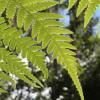







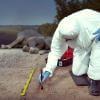


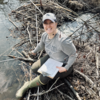

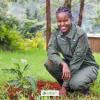







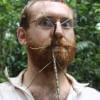

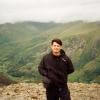






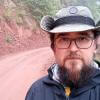



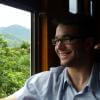





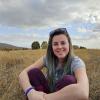







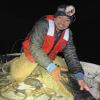
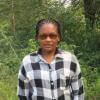



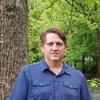



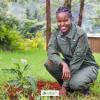


7 September 2024 9:44am
I just noticed that TrapTagger has integrated AI reading of timestamps for videos. I haven't had a chance to try it out yet, but it sounds promising.